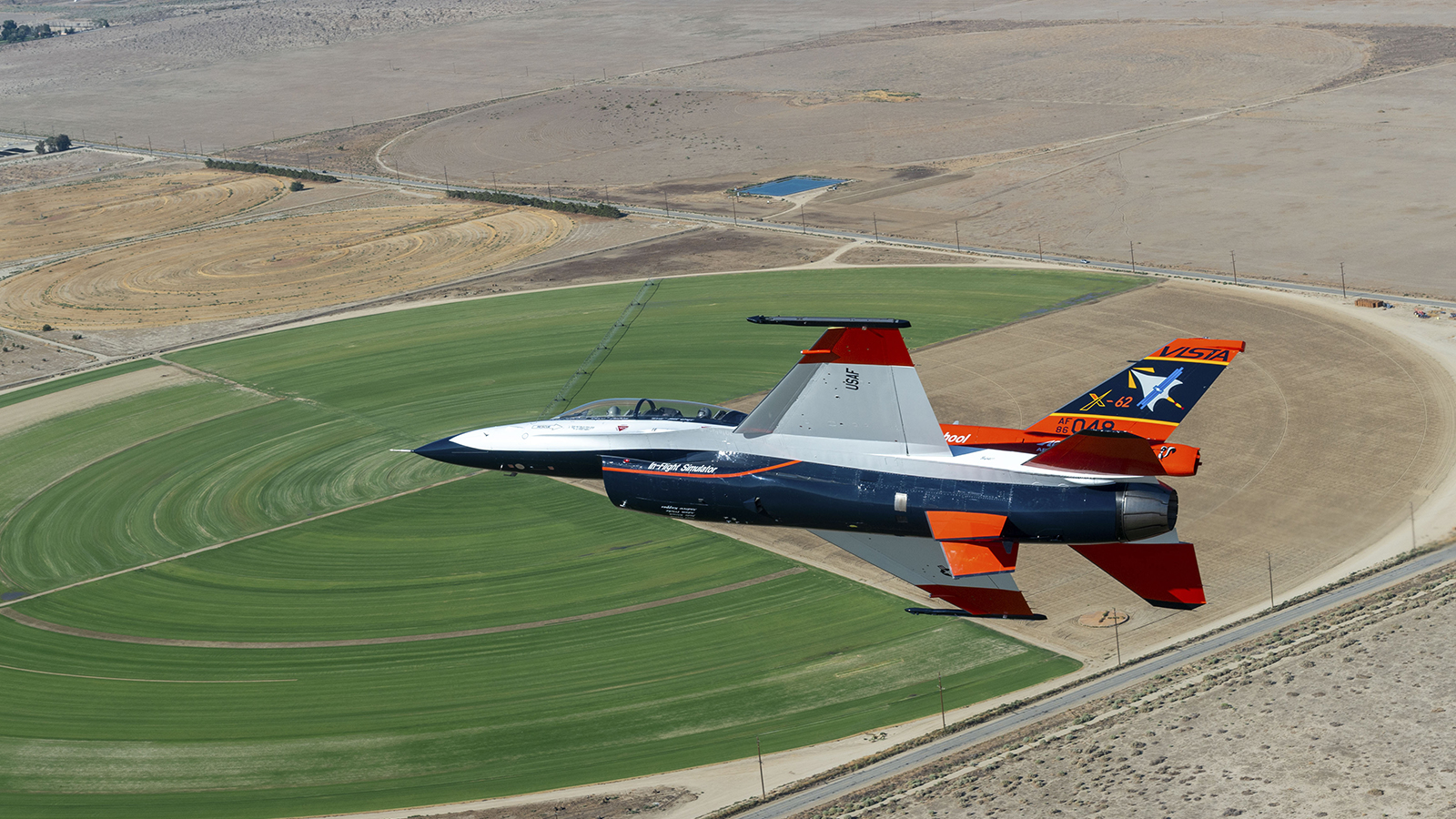Stay Up to Date
Submit your email address to receive the latest industry and Aerospace America news.
Later this year, Air Force Secretary Frank Kendall plans to climb into a modified F-16 trainer and take to the skies above Edwards Air Force Base in California. A safety pilot will join him, but if all goes as planned, neither will touch the flight controls — instead, artificial intelligence algorithms will do the flying.
Kendall wants to witness one of the AI versus human dogfights that DARPA’s Air Combat Evolution, or ACE, program began conducting last year together with the Air Force Test Pilot School. In September, AI “agents,” meaning software written to autonomously carry out a specific task, for the first time piloted the modified trainer, designated the X-62A VISTA, against a conventionally piloted F-16.
“I want to get a sense of how the autonomy actually functions and get some feedback of how far that technology has come,” Kendall told reporters at the Space Symposium in Colorado Springs.
The matchups are the culmination of four years of simulator and solo flight tests to determine if AI-controlled aircraft could one day participate in aerial combat, “as an entry point into human-machine teaming in the future,” Air Force Lt. Col. Ryan Hefron, the ACE program manager, told reporters last month during a virtual press conference. The Air Force last month selected Anduril and General Atomics for continued funding under its Collaborative Combat Aircraft initiative, to design and manufacture test versions of autonomous drones that might someday fly alongside human-piloted fighters.
In the September trials, the AI agents “performed well in general,” said Col. James Valpiani, commandant of the Air Force Test Pilot School. The aircraft came with 610 meters of each other during nose-to-nose maneuvers. The Air Force and DARPA aren’t disclosing how often the AI agents won, but managers noted that the two pilots aboard each VISTA flight never had to take over control from the AI.
The flights were also an exercise in rapid software changes, Valpiani said, which were often made “overnight” and then uploaded while the VISTA was taxiing or airborne. DARPA also swapped in different versions of the AI agents throughout the flights. These were supplied by ACE contractors, all in California: EpiSci, a software company founded in 2012; PhysicsAI, a startup with various defense contracts related to AI; and Shield AI, which is also building an AI pilot for AFRL’s XQ-58 Valkyrie. An additional agent for benchmarking was supplied by the Applied Physics Laboratory at Johns Hopkins University in Maryland.
Based on the initial flights, Hefron is optimistic that ACE will be able to create a process to “rapidly adapt and retrain” the agents to fly other aircraft. But it will take many more VISTA flights to reach that point.
As for Kendall’s flight, he might find his ride in the VISTA fairly ordinary, if Hefron’s experience is any indication. “It wasn’t terribly different” from training flights with human student pilots, Hefron said, likening any uncertainty how “you don’t always know what’s going through the student’s mind at any given time.”
Nevertheless, he said, “it was an awesome experience seeing it firsthand.”
About cat hofacker
Cat helps guide our coverage and keeps production of the print magazine on schedule. She became associate editor in 2021 after two years as our staff reporter. Cat joined us in 2019 after covering the 2018 congressional midterm elections as an intern for USA Today.
Related Posts
Stay Up to Date
Submit your email address to receive the latest industry and Aerospace America news.




